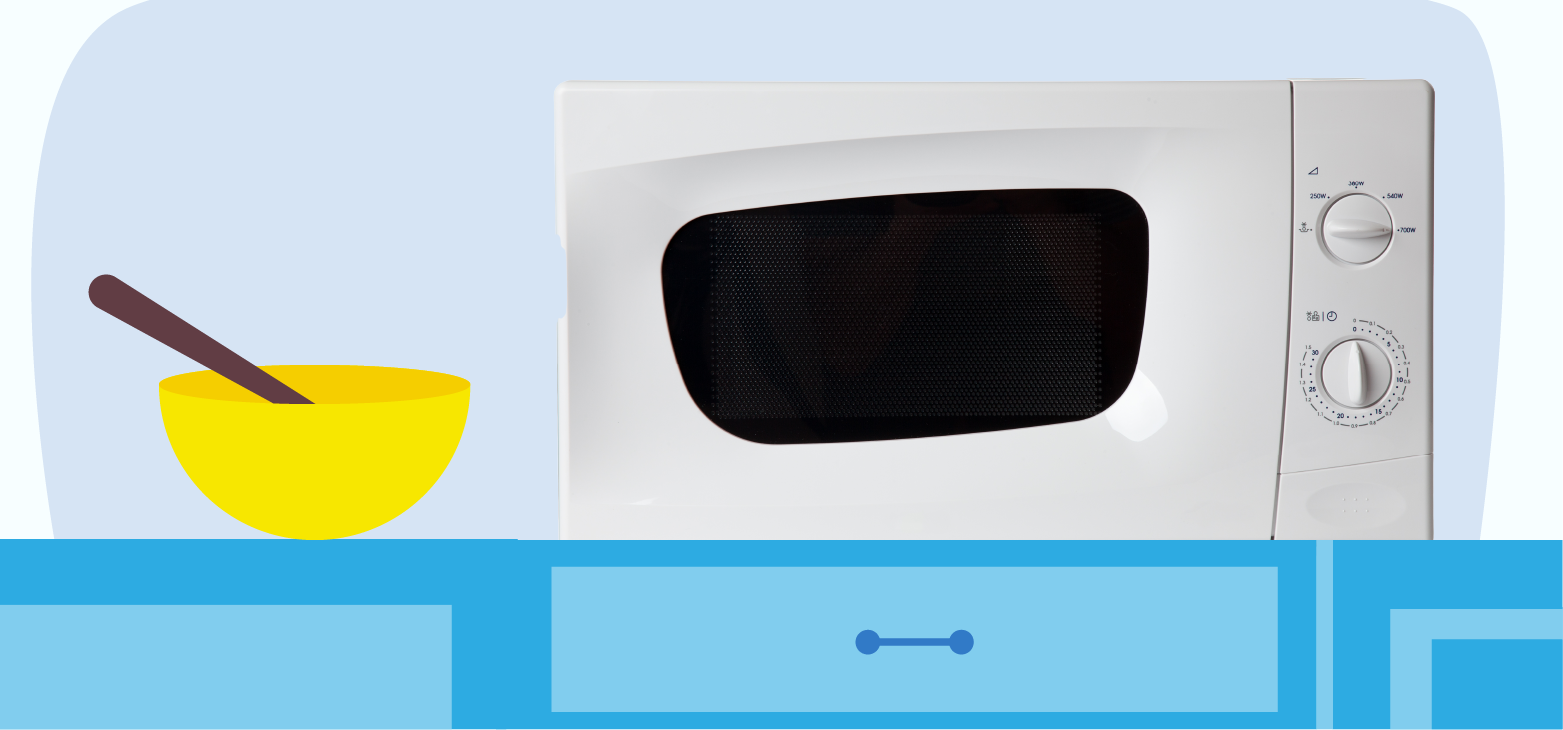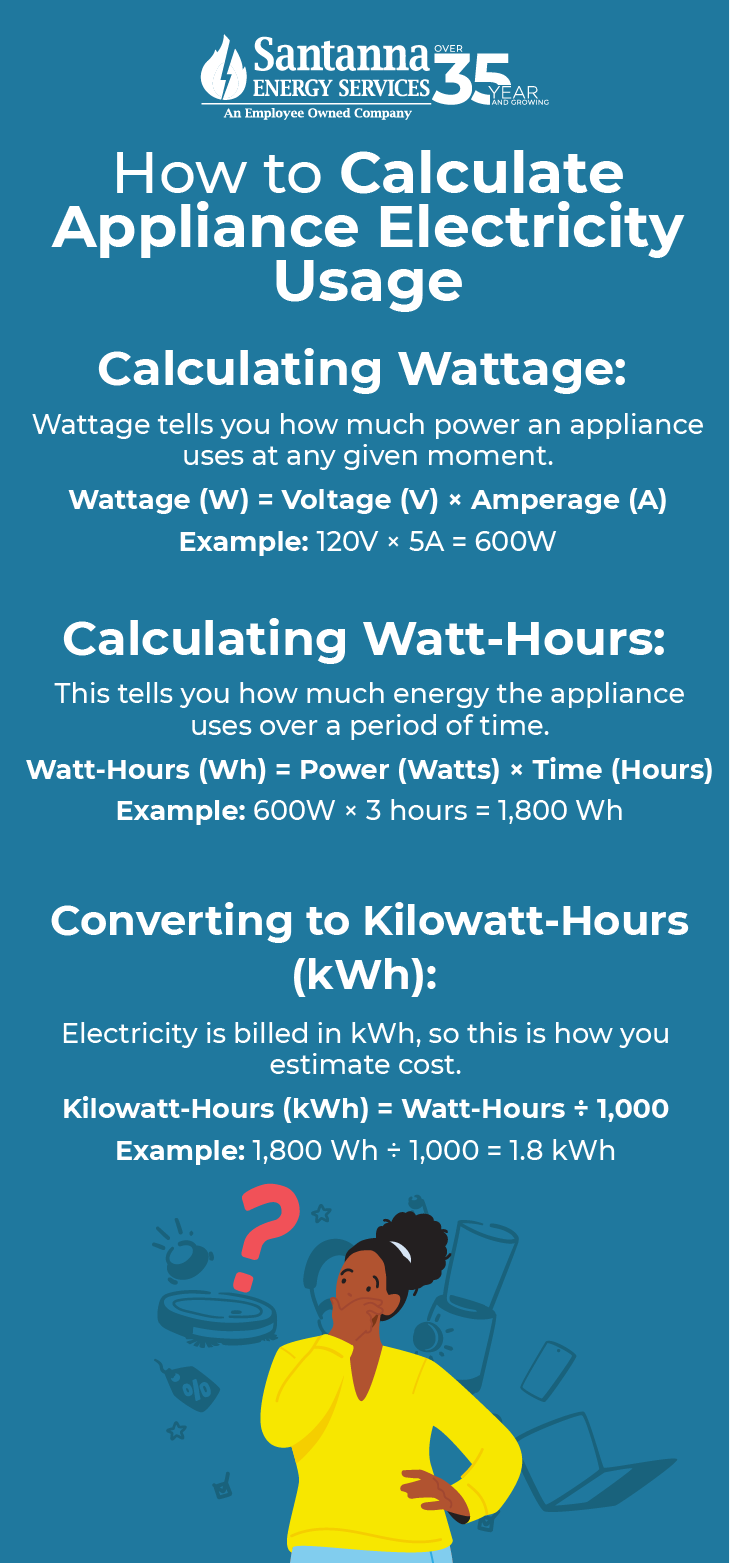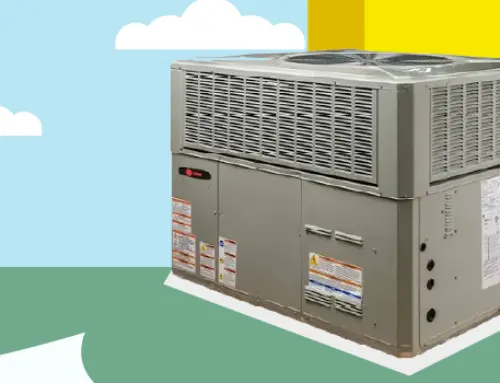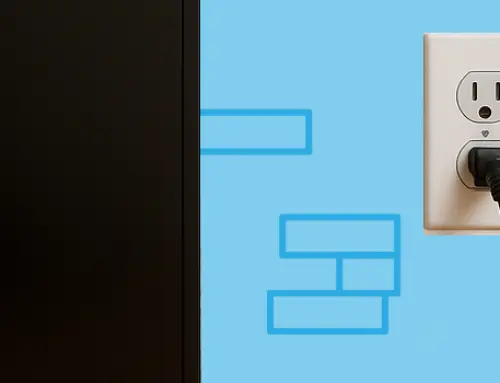How to Calculate Electricity Usage: For Your Bill & Appliances
by Tyler Castle
17.4 min read

Understanding how electricity is used and billed in your home isn't just about reading numbers on a statement, it's a practical, empowering step toward saving money, improving energy efficiency, and reducing your environmental footprint. In a typical U.S. household, nearly half of all energy consumption goes to heating and cooling, with water heating, lighting, and everyday appliances accounting for much of the rest. In fact, they make up about half of all the energy we use globally—more than electricity and even transportation.
But here's the good news: once you learn how to calculate the energy each appliance uses, you gain real insight into your total household electricity usage. That knowledge doesn't just help you identify energy hogs; it also allows you to confidently estimate your full electric bill and find meaningful ways to cut costs.
We'll walk you through how to calculate your electricity usage step by step, from identifying appliance wattage to converting usage into kilowatt-hours. If you're ready to stop guessing and start managing your electricity with clarity, you're in the right place. Let's dive in.
Understanding Units of Measurement for Electricity
In order to properly calculate your energy usage, you'll need to understand how electricity is measured. Commonly, electricity is measured by five units of measurement. Here's how they compare and what their used to measure:
- Amps (short for amperes) tell us how much electric current is flowing through a wire. It's important to know the amps of your appliance because every electrical system can only handle so much current safely. If too many amps try to flow through an outlet at once, you risk blowing a fuse or tripping a breaker.
- Ohms measure resistance—that's how much something pushes back against the flow of electricity. The higher the resistance, the harder it is for electricity to get through. You'll find resistance playing a big role in things like electric heaters and toasters, which convert electrical energy into heat.
- Volts are all about the pressure behind the flow of electricity. It's the force that pushes the electric current through a circuit. Your electrical outlets and light fixtures operate at a certain voltage, usually around 120 volts in most U.S. homes.
- Watts tell you how much power something is using. It combines both amps and volts—1 amp flowing with 1 volt of pressure equals 1 watt of power. You'll see wattage on items like TVs and refrigerators; it gives you a good idea of how much electricity the device needs to run.
- Kilowatt-hour is a standard unit used to measure electricity usage. It represents the amount of energy consumed when a device uses 1,000 watts for one hour. You'll typically see this unit on your electric bill, showing how much energy you've used during a specific billing period, such as a month. All electric providers use kilowatts to measure tally up your electric bill each month.

How To Calculate Electricity Usage for Your Whole Home
Calculating your electricity usage helps you understand where your energy dollars are going—and more importantly, how to save. Here's how to easily calculate the electricity usage of your whole home:
Step 1: Check the Wattage of Each Appliance
If you really want a comprehensive overview of your home's electricity consumption, start by logging the wattage of each device (or your most used appliances for a less accurate but quicker calculation) in your home. Every device in your home uses a certain amount of power that contributes to your home's energy consumption.
To find the wattage of each device, look for a wattage label on your appliance. If you can't find this Information on the device itself, try looking in the appliance's user manual or looking up the model type online for an estimated wattage.
If none of these methods work out and your appliance's wattage is still lost, you can easily calculate it by multiplying voltage × amperage of your appliances. These values might also be found on your appliance's label, in its manual, or online.
Step 2: Estimate Daily Usage Time
Once you've gathered the wattage of each appliance and device used in your home, think about how many hours per day you typically use the appliance. This step is key to calculating energy consumption accurately.
For example, you might watch TV for about five hours each day while a refrigerator runs 24 hours a day, even though it cycles on and off, because it stays plugged in and uses energy throughout the day. A washing machine may run for one hour per load, and if you do laundry three times a week, that averages out to about 0.43 hours of use per day.
Do this for every major appliance or device you regularly use. If usage varies throughout the week, try to find a daily average to keep your estimate realistic.
Step 3: Calculating Watts to Kilowatt-Hours
Once you have the daily usage time for each item, you're ready to move on to the next step: calculating energy consumption in kilowatt-hours (kWh). The kilowatt-hour is the primary unit electricity companies use to measure and bill for your monthly energy usage. Understanding how kWh works can help you estimate your monthly electric bill more accurately and plan your budget accordingly.
To find how many kilowatt-hours a single device uses, multiply your wattage by the hours you're using it for, and divide that total by 1,000 because 1 kilowatt equals 1,000 watts.
Formula: (Watts × Hours) ÷ 1,000 = kilowatt-hours (kWh)
Example: If you use a 1,500-watt space heater for 3 hours a day, you would calculate:
1,500 watts × 3 hours = 4,500 watt-hours then 4,500 ÷ 1,000 = 4.5 kilowatt-hours (kWh) per day.
This formula gives you the energy consumption for a single appliance. To calculate your energy usage for your whole home, simply repeat the process for each major appliance or device, then add all the individual kilowatt-hour totals together to get your household's total daily energy use. For calculating your monthly energy usage, take the number of kilowatt-hours you've calculated and multiply that number by 30 for each by of the month.
According to the E.I.A, the average monthly household energy consumption in the U.S falls to around 899 kWh. So, if you're right around this range, you're falling within the national average!
How To Calculate Your Electricity Bill
Once you've learned how to calculate the electricity usage of your home, calculating your estimated average electricity bill should be a piece of cake! Here's how to do it:
1. Determine Your Energy Consumption
Start by identifying your total energy usage in kilowatt-hours (kWh) for the billing period or calculating it yourself from the steps above —by multiplying the wattage of each appliance by the hours used, converting to kWh, and summing it all up. This information is typically available on your electricity meter or your monthly electricity bill.
2. Multiply by Your Local Rate
Next, multiply your total energy usage (in kWh) by the rate your electricity provider charges per kilowatt-hour. This rate varies by provider and location but to give you a benchmark, the average monthly electricity rate in the U.S as of February 2025 is 16.44 cents per kWh.
For example, if you used 750 kWh in a month and your provider charges $0.1644 per kWh, your usage cost would be: 750 kWh × $0.1644 = $123.30.
This amount is typically referred to as the "supply charge" on your electricity bill. Keep in mind that depending on your energy plan and seasonal usage patterns, this cost may vary from month to month.
3. Add Fixed Charges and Fees
In addition to your energy usage cost, most electricity bills include fixed fees and other charges that you can include in your calculation of your electricity bill for an even more accurate picture. These changes can include:
- Base Service Fee: A fixed monthly charge for maintaining your service.
- Taxes: Local and state taxes applicable to your energy usage.
- Regulatory Fees: Charges imposed by government agencies.
- Other Fees: Such as environmental surcharges or late payment fees.
Keep in mind that these fees may vary from provider to provider, depending on your location, your electricity plan type and rates may change month-to-month.
Keep in mind, this calculation is only an estimate. Your actual electricity bill may vary due to varying factors like weather, pets and more. Check out our blog for the most common (and uncommon) reasons your electricity bill is high!
How To Find the Wattage of an Individual Device
Finding the wattage of your appliance is the first step in calculating the electricity usage of a single device. To figure out how much electricity your devices use, start by checking their wattage. To find the wattage of a device to estimate your energy use and costs, start with the label or nameplate on the back, bottom, or inside the door of the appliance. It often lists:
If you can't find a label or the information is unclear, search for your appliance's make and model number online or check the user manual that came with your appliance. Look for a section labeled "Specifications" or "Specs". This section typically includes wattage, voltage, and sometimes even estimated annual energy consumption.
How To Calculate Your Device's Wattage Using Volts and Amps
If the wattage isn't clearly listed on your device's label or in the manual, don't worry—you can still figure it out. Most appliances list their voltage (V) and current (amps or A), and with a simple formula, you can calculate the wattage yourself.
To calculate wattage when only voltage and current are provided, use the formula:
Wattage (W) = Voltage (V) × Current (A)
For example, a heater operating at 115 volts and drawing 5 amps consumes 575 watts (115V × 5A = 575W).
How To Calculate Watt-Hours of an Appliance
Understanding how much energy your appliances consume is essential for managing electricity usage and controlling costs. The key metric for this is the watt-hour (Wh), which quantifies the amount of energy used by a device over a certain period of time. To calculate the watt-hours of an appliance use the formula:
Watt-Hours (Wh) = Power (Watts) × Time (Hours)
This means you multiply the wattage of the appliance (how much power it draws) by the number of hours you use it. For example, if you run a 100-watt lightbulb for 5 hours, it would use:
100 watts × 5 hours = 500 watt-hours (Wh)
This formula determines the total energy used by multiplying the appliance's power rating by the duration of its operation. This calculation helps you compare the energy usage of different appliances and ultimately helps you calculate the overall electricity consumption and cost of your device.
Here's the average amount of watt-hours a common appliance uses daily:
Estimated Daily Watt-Hour Usage by Common Appliances
| Appliance | Power (Watts) | Usage Time | Watt-Hours |
|---|---|---|---|
| Ceiling Fan | 60 W | 8 hours | 480 Wh |
| Television | 100 W | 6 hours | 600 Wh |
| Microwave Oven | 1,000 W | 0.5 hours | 500 Wh |
| Air Conditioner | 3,000 W | 8 hours | 24,000 Wh |
| Space Heater | 1,500 W | 8 hours | 12,000 Wh |
| Refrigerator | 500 W | 24 hours | 12,000 Wh |
| Hair Dryer | 1,000 W | 0.5 hours | 500 Wh |
| Laptop | 100 W | 10 hours | 1,000 Wh |
| Dishwasher | 1,800 W | 2 hours | 3,600 Wh |
Note: Actual energy consumption may vary based on appliance efficiency and usage patterns.
How To Convert Watt-Hours Into Kilowatt-Hours
To figure out how much energy an appliance uses—and how much it might cost to run—it’s important to know how to calculate kilowatt-hours (kWh). By converting watt-hours to kilowatt-hours, you can get a clearer picture of how much energy is being consumed and make more accurate comparisons between different devices.
To convert watt-hours into kilowatt-hours, you need to account for the fact that 1 kilowatt (kW) equals 1,000 watts. So, if you know the watt-hours your appliance uses, simply divide that number by 1,000. This converts your energy usage into a more standardized unit that your electricity provider uses.
Formula: Kilowatt-Hours (kWh) = Watt-Hours ÷ 1,000
For example, if a device consumes 1,200 watt-hours of energy, you would calculate: 1,200 Wh ÷ 1,000 = 1.2 kWh.
For a clearer picture, let’s take a look at how many kilo-watt hours an appliance uses daily:
Average Daily Kilowatt-Hours By Appliance
| Appliance | Power (Watts) | Usage Time | Watt-Hours | Kilowatt-Hours (kWh) |
|---|---|---|---|---|
| Ceiling Fan | 60 W | 8 hours | 480 Wh | 0.48 kWh |
| Television | 100 W | 6 hours | 600 Wh | 0.6 kWh |
| Microwave Oven | 1,000 W | 0.5 hours | 500 Wh | 0.5 kWh |
| Air Conditioner | 3,000 W | 8 hours | 24,000 Wh | 24 kWh |
| Space Heater | 1,500 W | 8 hours | 12,000 Wh | 12 kWh |
| Refrigerator | 500 W | 24 hours | 12,000 Wh | 12 kWh |
| Hair Dryer | 1,000 W | 0.5 hours | 500 Wh | 0.5 kWh |
| Laptop | 100 W | 10 hours | 1,000 Wh | 1 kWh |
| Dishwasher | 1,800 W | 2 hours | 3,600 Wh | 3.6 kWh |
How To Calculate an Appliance’s Electricity Cost
Now that we know how much electricity an appliance uses, what about the cost? If you’re looking to calculate your appliance’s electricity cost, it’s easier than you think!
1. Calculate Daily Energy Consumption
To find out how much your appliance will cost you, you’ll first need to figure out its overall energy consumption. To do this, find your appliance’s wattage (typically listed on a label or in the user manual) and determine the number of hours per day you use it. Multiply the two together then divide by 1,000 to get your energy consumption in kilowatt-hours.
2. Calculate Daily Cost
Once you have the daily kWh usage, you can estimate how much it costs to operate the appliance each day by multiplying that number by your electricity rate, which you can find on your electric bill (usually listed in cents or dollars per kWh).
For example, ff your electricity rate is $0.16 per kWh, and you’re running a space heater (which uses 6 kWh per day) would cost you $0.96 per day!
Average Electricity Cost per Appliance at the 15.95 Cents per Kilowatt-Hour Rate (as of January 2025)
| Appliance | Kilowatt-Hours kWh | Usage Time | Average Daily Electricity Cost | Average Weekly Electricity Cost | Average Monthly Electricity Cost | Average Yearly Electricity Cost |
|---|---|---|---|---|---|---|
| Ceiling Fan | 0.48 kWh | 8 hours | $0.08 | $0.54 | $2.30 | $27.94 |
| Television | 0.6 kWh | 6 hours | $0.10 | $0.67 | $2.87 | $34.93 |
| Microwave Oven | 0.5 kWh | 0.5 hours | $0.08 | $0.56 | $2.39 | $29.11 |
| Air Conditioner | 24 kWh | 8 hours | $3.83 | $26.80 | $114.84 | $1,397.22 |
| Space Heater | 12 kWh | 8 hours | $1.91 | $13.40 | $57.42 | $698.61 |
| Refrigerator | 12 kWh | 24 hours | $1.91 | $13.40 | $57.42 | $698.61 |
| Hair Dryer | 0.5 kWh | 0.5 hours | $0.08 | $0.56 | $2.39 | $29.11 |
| Laptop | 1 kWh | 10 hours | $0.16 | $1.12 | $4.79 | $58.22 |
| Dishwasher | 3.6 kWh | 2 hours | $0.57 | $4.02 | $17.23 | $209.58 |
Electricity rates vary by location, plan type, and usage habits, so actual costs may differ from the estimates provided.
Knowing how to calculate your appliance’s electricity cost can help you compare energy use between models, identify opportunities to cut back or use appliances more efficiently, and even identify when it’s time for a new device!
Understanding the Different Charges on Your Electricity Bill
Your electricity bill is more than just the cost of the power you use. It includes multiple charges—each reflecting a different part of how electricity is delivered to your home and ultimately, your overall monthly cost. Here’s a breakdown of what you’re really paying for:
1. Supply Charges (Generation Service)
This is the cost of the actual electricity you use, measured in kilowatt-hours (kWh). It includes the cost of generating the electricity you need regardless of its energy source. If you’re enrolled with a retail energy provider, this section might also include any locked-in rates or supply plan terms.
2. Delivery Charges (Distribution & Transmission)
Even if you’re with an alternative energy supplier for your electricity needs, your utility still delivers it to your home.
Delivery charges cover the infrastructure that gets electricity from the power plant to your home, including high-voltage transmission lines, local distribution lines, transformers, and substations. These fees also support maintenance, upgrades, and reliability improvements for the electric grid.
3. Customer Service or Base Charges
Many electricity providers have this charge that covers essential services such as maintaining your account, processing your bill, customer service support, and reading or maintaining your electricity meter.
4. State-Approved Fees
Rider charges are additional fees—or sometimes credits—that utilities are permitted to apply to your bill under state regulations. These often fund specific programs or offset expenses tied to public policy or infrastructure. Common rider types include energy efficiency programs that promote reduced electricity use, renewable energy surcharges to support solar and wind expansion and more.
These charges obviously vary from state-to-state.
5. Taxes and Government Fees
Lastly, your bill will likely include taxes and government fees. These can vary based on your state or municipality but often include state and local sales tax, which is calculated as a percentage of your total bill.
You may also see a kilowatt-hour (kWh) tax, which is based on the amount of electricity you consume, and environmental compliance fees, which help fund government-mandated programs related to clean energy, emissions reductions, or environmental protection.
How to Save Electricity in Your Home
Looking for more out of your electricity bill? Here’s our best tips on how to save on your next bill:
- Unplug Unused Appliances: Devices like toasters, coffee makers, and phone chargers can draw power even when turned off, contributing to “phantom loads.” Unplugging these devices when not in use can reduce unnecessary energy consumption.
- Use Smart Thermostats: Installing programmable thermostats allows for automatic temperature adjustments based on your schedule, optimizing heating and cooling efficiency.
- Seal and Insulate Your Home: Proper insulation and sealing gaps around doors and windows prevent heat loss in winter and keep cool air inside during summer, reducing the workload on HVAC systems.
- Upgrade to Energy-Efficient Appliances: Replacing old appliances with ENERGY STAR-rated models can lead to significant energy savings over time.
- Utilize Natural Ventilation: On cooler days, opening windows to allow cross-ventilation can reduce the need for air conditioning.
- Upgrade to LED Bulbs for Long-Term Savings: Switching to LED bulbs is a quick upgrade that can make a big difference, they use up to 75% less energy than incandescent bulbs and last much longer, helping you save on replacement costs too.
- Use Ceiling Fans to Reduce A/C Usage: Installing ceiling fans can help circulate air more efficiently, allowing you to raise your thermostat a few degrees without sacrificing comfort. This reduces the load on your air conditioner and cuts cooling costs.
- Shorten Showers to Save Water and Energy: Taking shorter showers not only conserves water but also reduces the amount of energy needed to heat that water, especially if you use an electric water heater.
- Run Appliances Efficiently and Only When Needed: Try to use only the energy you need when running household appliances. Run the dishwasher only when it’s full, set your washing machine to the appropriate water level, and wash clothes in cold water unless they’re heavily soiled—all of which can significantly reduce energy use.
- Seal and Upgrade Windows to Reduce Energy Loss: Make sure your windows are tightly sealed to prevent drafts and energy waste. For even greater efficiency, consider upgrading to energy-efficient windows that help retain heat in the winter and keep cool air inside during the summer.
Lock In Your Supply Charge with Santanna’s Unlimited Energy Plan
Is the cost of your next electricity bill frightening you? If you’ve ever been surprised by your electricity bill, especially during months when demand spikes, you’re not alone. One easy way to take the stress out of those fluctuating supply charges is by choosing Santanna’s Unlimited Energy Plan.
With this plan, your supply charge stays the same every month, no matter how much energy you use*. That means no more worrying about price jumps when the weather gets extreme or demand goes up.
It’s a great option if you prefer predictable expenses and like to stay in control of your monthly budget. While your delivery and distribution charges—the ones set by your utility—can still vary, your supply charge is locked in, giving you peace of mind and protection against market volatility. If stability sounds like a win, this plan is definitely worth considering.
FAQs
Do energy-efficient appliances really make a difference?
Yes, energy-efficient appliances can significantly reduce energy consumption and utility bills. For instance, ENERGY STAR-certified appliances meet strict energy efficiency guidelines set by the U.S. Environmental Protection Agency and the Department of Energy. These appliances use less energy, saving consumers money and reducing greenhouse gas emissions.
What is the impact of unplugging devices on my energy bill?
Unplugging devices can lead to noticeable energy savings. Many appliances consume electricity even when turned off, known as “phantom” or standby power. By unplugging devices like chargers, toasters, and entertainment systems when not in use, households can reduce their energy consumption and lower their electricity bills.
Understanding your electricity usage gives you the power to make smarter decisions, reduce waste, and take control of your monthly bills. From estimating appliance costs to reading your meter, every step helps you use energy more wisely—and confidently.
If you’re ready to take the guesswork out of your electricity bill, Santanna’s Unlimited Energy Plan could be the perfect next move. It offers a predictable supply charge, no seasonal surprises, and the peace of mind that comes with energy certainty—especially for homes with varying usage.* Explore Santanna’s Unlimited Energy Plan and see if it’s right for you!
* Restrictions apply. Enrollment based upon program eligibility. Customers using more than 125% of normal monthly usage as determined by Santanna may be required to switch plans.
Tyler is an experienced energy professional, having worked for Santanna Energy Services, for the past four years. He is passionate about renewable energy and believes that diversifying the energy grid is the key to a sustainable future. Tyler is dedicated to supplying consumers with the best possible energy solutions and works diligently to make sure that Santanna can deliver the highest quality service.







